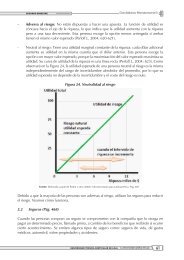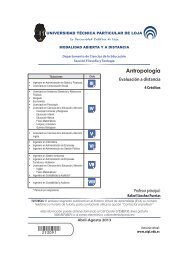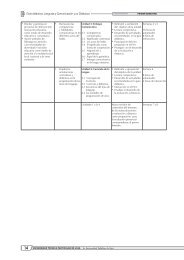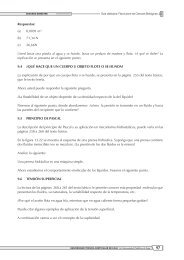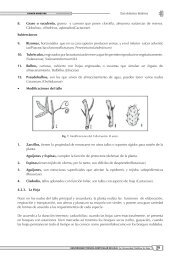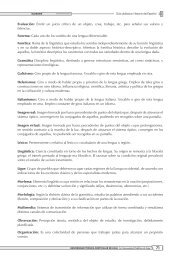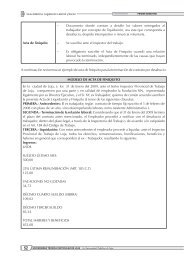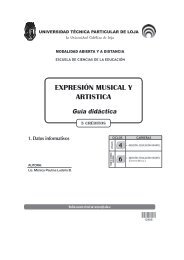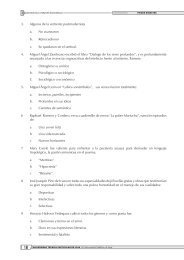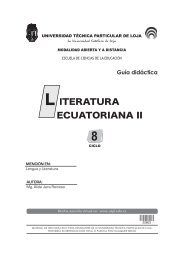Communicative Grammar III - Bad Request - Universidad Técnica ...
Communicative Grammar III - Bad Request - Universidad Técnica ...
Communicative Grammar III - Bad Request - Universidad Técnica ...
Create successful ePaper yourself
Turn your PDF publications into a flip-book with our unique Google optimized e-Paper software.
Guía didáctica: <strong>Communicative</strong> <strong>Grammar</strong> <strong>III</strong><br />
Once you understand the use of these modals of advice you can move on to the next point.<br />
8.2. Necessity: Have (got) to, Must, Don’t have to, Must not, Can’t<br />
In this new topic we will start by reading an article about some rules for international travel. This article<br />
can be found in the section called “<strong>Grammar</strong> in Context” in your textbook. For a better comprehension<br />
do the activities “Before you Read”, “After you Read” and answer the following questions:<br />
Exercise:<br />
Why does the columnist recommend …<br />
- carrying your passport for all international travel?<br />
_______________________________________________________________<br />
- renewing your passport if it will expire in three months?<br />
_______________________________________________________________<br />
- not bringing fresh food into foreign countries?<br />
_______________________________________________________________<br />
- getting an IDP for an around-the-world tour?<br />
_______________________________________________________________<br />
- moving around and drinking plenty of water on long flights?<br />
_______________________________________________________________<br />
You can use a dictionary if you find words that you don’t understand.<br />
After completing the exercise above, look at the charts in the section “<strong>Grammar</strong> Presentation”. You will<br />
see the structure of statements that use the modals “have (got) to” and “don’t have to”. Then, read the<br />
section “<strong>Grammar</strong> Notes” in which you will learn about the uses of the aforementioned modals to express<br />
different degrees of necessity.<br />
I hope these structures are easy to understand. Now you can begin to work on the “Focused Practice” and<br />
“Communication Practice” sections in your textbook.<br />
I’m sure that you can do all of the activities suggested without any problems. Let’s move on to the next<br />
grammar point.<br />
8.3. Expectations: Be supposed to<br />
We will start this grammar point by reading a page from Ms. Etiquette’s Book, The Right Thing. You will<br />
find this text in the “<strong>Grammar</strong> in Context” section in your textbook. Do the activity “Before you Read”.<br />
When you finish reading, do the activity “After you Read” and answer the following comprehension<br />
questions:<br />
Exercise:<br />
What has the reader been invited to do?<br />
_______________________________________________________________<br />
UNIVERSIDAD TÉCNICA PARTICULAR DE LOJA La <strong>Universidad</strong> Católica de Loja 61



